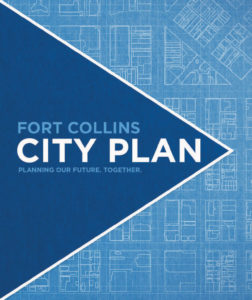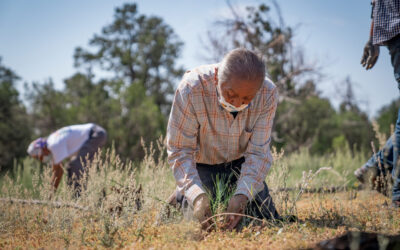
Cameron Gloss, Fort Collins long range planning manager
Why update the Fort Collins City Plan now?
The city’s comprehensive plan was adopted in 1997, and the notion was there would be a 20-year horizon. Here we are, 22 years later, and it makes sense to see how we did and take a fresh look at what happens over the next 20 years.
How did you do? Was the ‘97 plan a good guide to the future?
The housing in the newly developing areas of Fort Collins matches relatively closely to that city plan vision—greater density, more efficient use of land. We’ve made great strides, even with all the population growth, of managing traffic congestion. Those are two areas where I think we absolutely hit the mark.
What challenges does Fort Collins face today that it didn’t have 22 years ago?
The price of housing is exceeding the ability for folks to pay. We’re seeing wages not keeping up and the supply of housing not keeping pace. When we poll the community, that’s always the number-one issue.
Any other new issues you’ve had to address in this round of planning?
There’s been a dramatic demographic shift. We have an aging population, but another age cohort, the Millennials, is growing rapidly as well. The needs of these groups are considerably different than what we’ve tried to address in the past. We’re seeing people having fewer children, delaying having families, people living longer, and all of this points to a household size that is smaller. But that’s not necessarily reflective of the housing stock we have in place.
You’ve worked all over the country. Does Fort Collins right now remind you of any other U.S. communities?
There are other college towns that are similar. I think of Ashville, North Carolina. San Luis Obispo, California is another one. Burlington, Vermont. Flagstaff, Arizona. These are emerging areas that are not directly connected to an urban area. They have an economy that’s not just based in one industry. And they all have a unique sense of place. Fort Collins isn’t just anywhere. It has a distinct identity.
How would you define that?
We have this connection to the land that people find unique. There’s a relationship between the urban and the natural that seems to work very well.
Does the growth of the region threaten that relationship?
Great places don’t happen by chance. They happen by choice. For us to be successful, we have to make a very conscious effort to understand the data, understand our options, and then make the right choices.
Are there any recent examples that illustrate this kind of decision making?
Jessup Farm was an old farmstead that’s been converted to a commercial area with a host of different housing types within a five-minute walk. That points to a direction we’re trying to head in, with the housing variety. The [proposed] Montava project has a working farm, a series of open-space areas, and a variety of housing types.
“The price of housing is exceeding the ability for folks to pay. When we poll the community, that’s always the number-one issue.”
What tools are at your disposal to affect those decisions?
There’s multiple components to that. We have a very detailed community engagement process any time development is proposed. We try to work collaboratively between the development community and neighboring property owners to understand what the opportunities are, and then try to design a solution where you come away with support for these types of changes.
When you think about Fort Collins’ future, what keeps you up at night?
I get concerned about individuals or businesses getting priced out of the community. We, like a lot other towns in our region, are really based on small businesses. We don’t want to be in a position where the price of housing or the cost of operating a business becomes so high that people can’t afford to be here even though they desire it.
That sounds like a very present concern, not something that’s over the horizon.
That’s correct.





